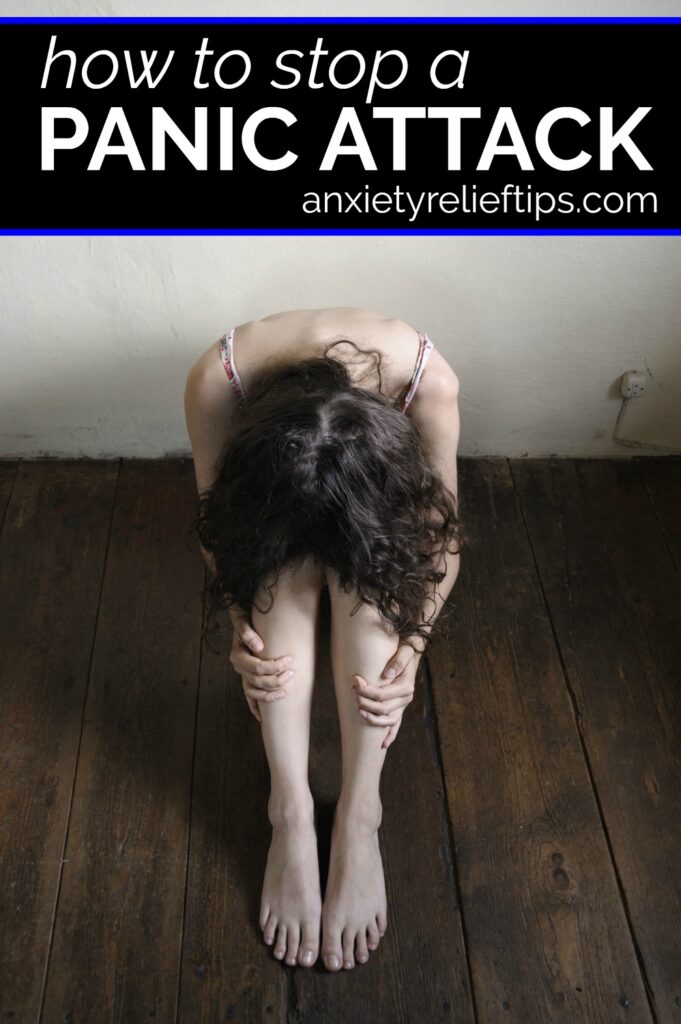Have you ever felt a sudden rush of anxiety and worry? One that combines both the mental and physical symptoms of terror? If so, you were probably having a panic attack.
These types of attacks can be triggered by a variety of things, including generalized anxiety disorder (GAD) or even a extremely stressful event that brings on panic attacks. Some people experience them acutely, which means only once or twice, while others have chronic panic attacks, which means it’s an ongoing issue.
These panic attacks usually come on without any warning and or apparent trigger. While you cannot always prevent them, it’s a possibility that you can learn techniques that help you to stop them.
How Do You Know You Are Having a Panic Attack?
To begin with, it’s critical to understand what the signs and symptoms of a panic attack are. Not only will this information help you know if you’re experiencing panic attacks, but it will also help you to recognize the signs and symptoms early on so that you can begin to implement a few of these strategies swiftly.
It’s best if you can stop a panic attack before it goes too far, since they will often worsen with time.
Here’s a list of symptoms that you may experience:
- Tunnel vision
- Dizziness or lightheadedness
- Fight or flight
- Fear of losing control
- Racing heartbeat
- Flushes or chills
- Sweating
- Tingling in the extremities
- Twitching or trembling muscles
- Feeling like you aren’t real
- Flushed face
- Fear of dying
Often Confused with Heart Attack Symptoms
Oftentimes, people will mistake the symptoms of a panic attack with a heart attack because they can feel very much alike, all the way up to the chest pains and dizziness. This can become a problem even if you know for sure that you’re having a panic attack.
People will start to intensely worry that their worrying could potentially lead to a heart attack, which causes the symptoms of the panic attack to worsen, causing you to feel as if it’s leading to a heart attack. This viscous cycle can continue unless you’re able to stop it in its tracks.
How to Stop a Panic Attack

Now let’s talk about some different strategies for stopping a panic attack. At first, you should know that not every method will work for every person, and you may discover other coping methods that work better for you. These are simply suggestions that are based on a combination of tips from professionals and things others have done to help reduce their anxiety attacks.
Practice Breathing Exercises
Many people swear that you can stop a panic attack by doing deep breathing exercises. If you have panic attacks, you know that will often make you feel like you’re losing control and that you can’t control you’re breathing. It feels as if you can’t breathe in and out as you should be able to normally.
To get your breathing under control, you need to inhale deeply through your nose and exhale through your mouth, focusing only on your breathing. Try deep, slow inhales of breath and keep your mouth closed. Then open your mouth and exhale. This simple breathing exercise will allow your overwhelmed mind to focus on your breath, and not the anxious thoughts.
Just Say NO
Being prepared with coping words and statements can be very helpful for someone who has panic attacks, especially when you’re experiencing the early symptoms of an impending panic attack.
If you’re someone who deals with an anxiety disorder that causes you to have frequent panic attacks, it’s very important that you come up with a coping word or phrase that you use as soon as you feel the attack coming on. It’s meant to ground you back in reality and allow you understand that you’re experiencing a panic attack your mind has created, not a stroke or a heart attack.
Many people find that shouting the word NO or STOP helps, while other people tell themselves it will be okay, that what they’re experiencing is not real.
Count Backwards from 100
When you’re already in the middle of having a panic attack, it might be too late to rely on your coping words. At this point, it’s really important that you get your mind to a more relaxed state.
One strategy for doing that is to focus on something that distracts you, like counting backwards from 100. This approach can be especially helpful when you find yourself in a situation where you’re having a full-on panic attack and you’re in the middle of doing something that needs your full attention like driving your car.
If you’re driving, you need to get yourself calmed down so you can pull over. In instances like this, counting backwards from 100 can be a useful strategy.
Distract Your Mind
Make a list of things that can distract you from the anxious thoughts and feelings. Some people find that listening to music, watching a movie or TV show, or talking to a loved one on the phone can be a good distraction. It can take a little time of experimenting with different distractions to discover what works best for you individually.
Keep on learning about panic attacks and anxiety disorders so that you can find a good management strategy that works best for you and your panic attacks.




